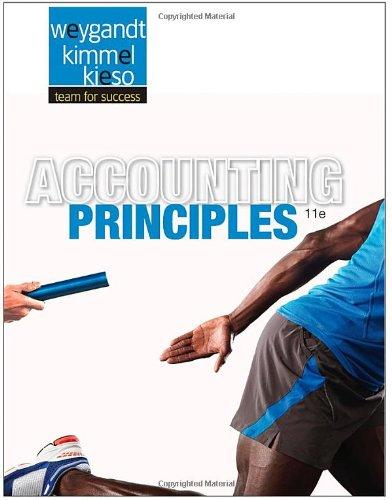Question
story : Bennett Body Company * Ralph Kern, controller of Bennett Body Company, received a memorandum from Paul Bennett, the company's president, suggesting that Kern
story : Bennett Body Company*
Ralph Kern, controller of Bennett Body Company, received a memorandum from Paul Bennett, the company's president, suggesting that Kern review an attached magazine article and comment on it at the next executive committee meeting. The article described the Conley Corporation's cost accounting system. Bennett Body was a custom manufacturer of truck bodies. Occasionally, a customer would reorder an exact duplicate of an earlier body, but most of the time some modifications caused changes in design and hence in cost.
(Anthony 598)
Anthony. Accounting: Texts and Cases, 13th Edition. McGraw-Hill Learning Solutions, 05/2010. VitalBook file.
The citation provided is a guideline. Please check each citation for accuracy before use.
THE CONLEY SYSTEM
Kern learned from the article that Conley also manufactured truck bodies but that these were of standard design. Conley had 12 models that it produced in quantities based on management's estimates of demand. In December of each year, a plan, or budget, for the following year's operations was agreed on, which included estimates of costs and profits as well as of sales volume.
Included in this budget were department-by-department estimated costs for each of the 12 models of truck bodies. These costs were determined by totaling estimated labor at an expected wage rate, estimated materials at an expected cost per unit, and an allocation for overhead that was based on the proportion of estimated total overhead costs to estimated total direct labor dollars. The sum of the labor, materials, and overhead estimates for each model became the standard cost of the model.
No attempt was made in Conley's accounts to record the actual costs of each model. Costs were accumulated for each of the four direct production departments and for several service departments. Labor costs were easily obtainable from payroll records, since all employees assigned to a production department were classified as direct labor for that department. Material sent to the department was charged to it on the basis of signed requisition slips. Overhead costs were charged to the department on the basis of the same percentage of direct labor as that used in determining the standard cost.
Since Conley's management also knew how many truck bodies of each model were worked on by each department monthly, the total standard costs for each department could easily be calculated by multiplying the quantity of that model produced by its standard cost. As the year progressed, management watched closely the difference between the departmental actual cost and standard cost.
As each truck body was completed, its cost was added to finished goods inventory at the standard cost figure. When the truck body was sold, the standard cost became the cost of sales figure. This system of cost recording avoided the necessity of accumulating detailed actual costs on each specific body that was built; yet the company could estimate, reasonably well, the costs of its products. Moreover, management believed that the differences between actual and standard cost provided a revealing insight into cost fluctuations that eventually should lead to better cost control. An illustrative tabulation of the costs for Department 4 is shown in Exhibit 1. No incomplete work remained in this department either at the beginning or at the end of the month.
THE BENNETT SYSTEM
Because almost every truck body that Bennett built was in some respect unique, costs were accumulated by individual jobs. When a job was started, it received a code number, and costs for the job were collected weekly under that code number. When materials used for a particular job were issued to the workers, a record of the quantities issued was obtained on a requisition form. The quantity of a given materialso many units, board feet, linear feet, pounds, and so onwas multiplied by its purchase cost per unit to arrive at the actual cost of material used. Maintenance of cumulative records of these withdrawals by code number made the total material cost of each job easy to determine.
Likewise, all labor costs of making a particular truck body were recorded. If a worker moved from job to job, a record was made of the worker's time spent on each job, and the worker's weekly wages were divided among these jobs in proportion to the amount of time spent on each. Throughout the shop, the time of any person working on anything directly related to an orderJob No. 437, for examplewas ultimately converted to a dollar cost and charged to that job.
Page 599
EXHIBIT 1 Summary of Costs, Department 4, November
Finally, Bennett's overhead costs that could not be directly associated with a particular job were allocated among all jobs on the proportional basis of direct labor-hours involved. Thus, if in some month 135 direct labor-hours were spent on Job No. 437, and this was 5 percent of the 2,700 direct labor-hours spent on all jobs at Bennett that month, then Job No. 437 received 5 percent of all the overhead costsupplies, salaries, depreciation, and so forthfor that month.
Under this system, Bennett's management knew at the end of each month what each body job in process cost to date. They could also determine total factory cost and therefore gross profit at the completion of each job.
Questions
- 1)As Mr. Kern, what would you be prepared to say in response to Mr. Bennett's memorandum?
- 2)How, if at all, should Bennett modify its present system?
Step by Step Solution
There are 3 Steps involved in it
Step: 1

Get Instant Access with AI-Powered Solutions
See step-by-step solutions with expert insights and AI powered tools for academic success
Step: 2

Step: 3

Ace Your Homework with AI
Get the answers you need in no time with our AI-driven, step-by-step assistance
Get Started


